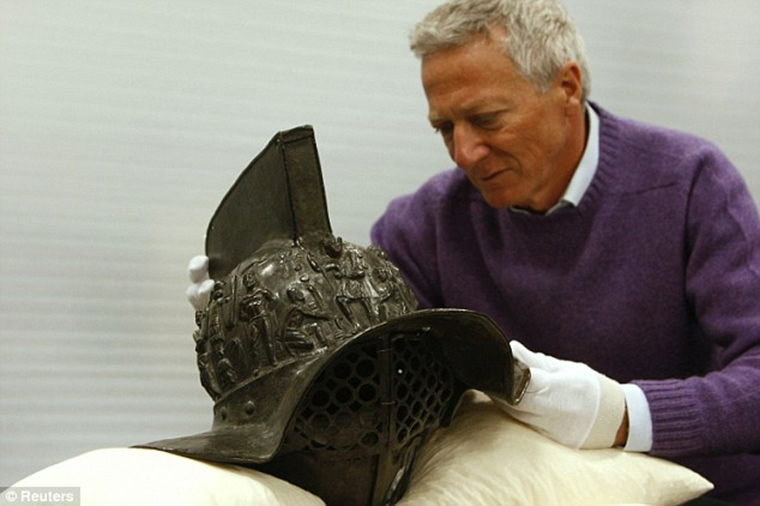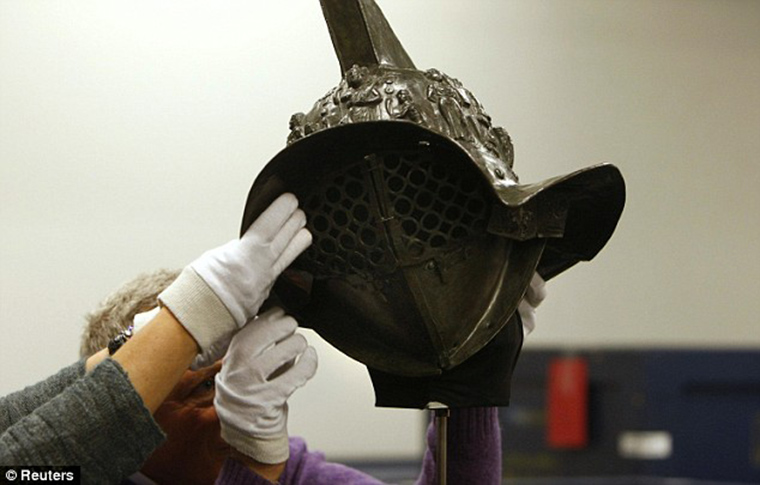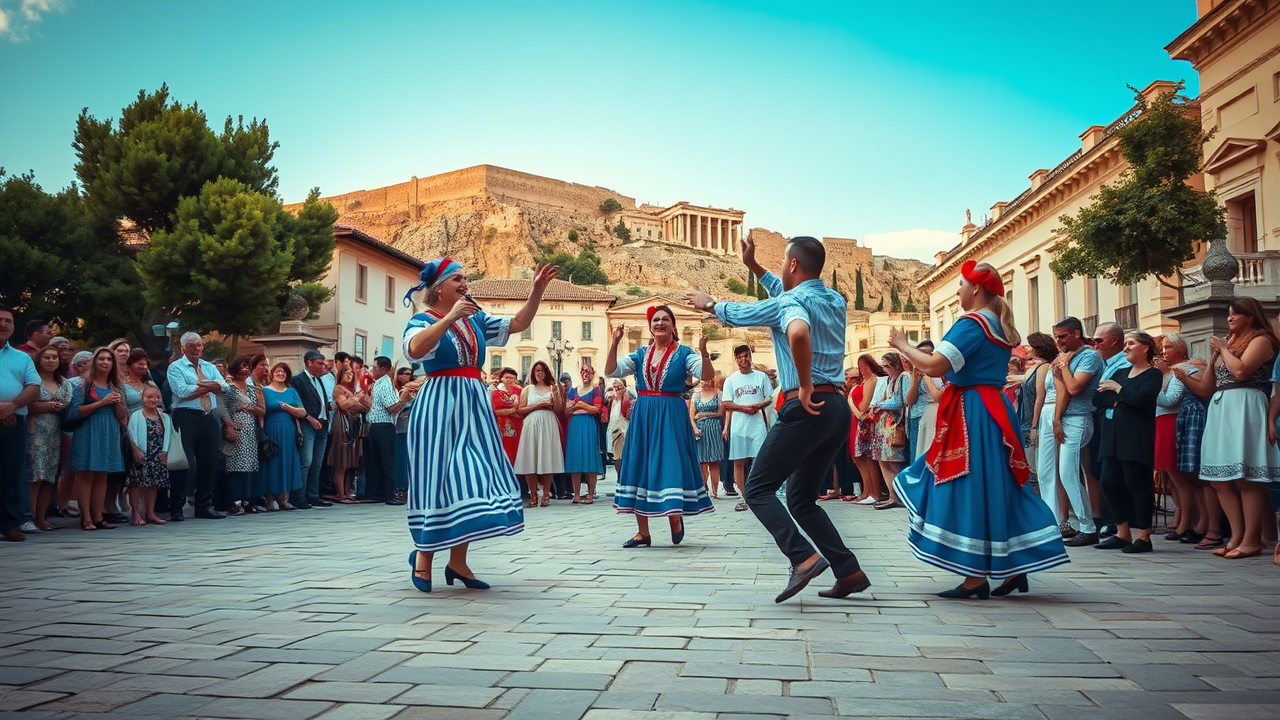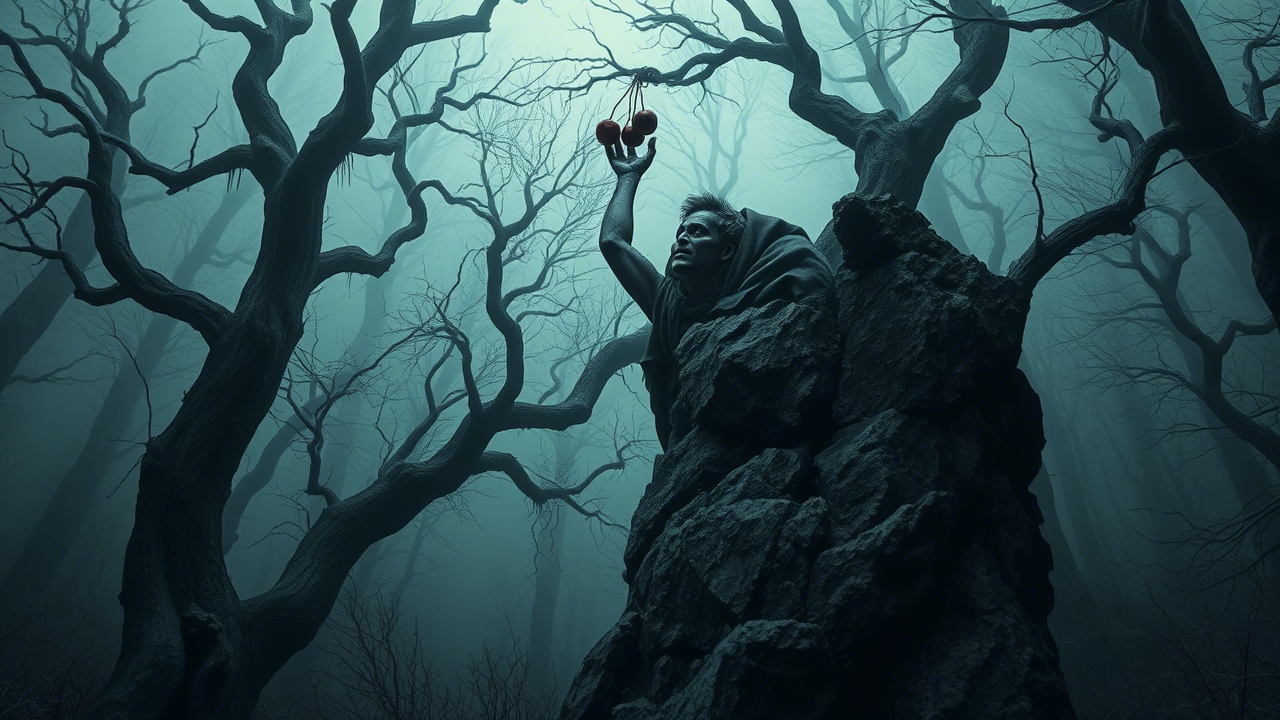In the ruins of Pompeii, findings revealed a gladiator’s helmet which is a center of attraction to all and is to be exhibited in Melbourne today
To show how people live in the ancient city the 2,000-year-old bronze helmet was brought to the Melbourne Museum counting as one of the 250 items brought for the exhibition.
Curators unveil a 2,000-year-old gladiator helmet from Pompeii as a preview for an exhibition at the Melbourne Museum
It was reported by Brett Dunlop who manages the museum that the helmet survived Mount Vesuvius eruption and was later recovered 200 years ago.
He said, in a storeroom found in the gymnasium area different items were found. These items include gladiators’ helmets, shin guards and shoulder guards.
Most gladiators must have run away from the scene when the volcano was erupting leaving behind most of their equipment.
The bronze helmet survived the eruption of Mount Vesuvius and was worn by a heavily armored gladiator called a ‘murmillo’
During the Roman Imperial age, the helmet must have been worn by a type of gladiator called ‘murmillo’
The high crest helmet together with its broad rim which is fish shaped is the features which distinguish a murmillo.
The name murmillo is gotten from the fish-shaped helmet whereas the word itself came from the Greek word for a type of saltwater fish.
A murmillo stands victorious over a retiarius in Pollice verso, a painting by Jean-Léon Gérôme (1852)
He can also wear a loincloth, belt, and short greaves on the lower parts of his legs, protecting his arm with a linen arm protector and the curved rectangular shield of the Roman legionary. This serves as an alternative to murmillo.
With him also is the legionary’s short, straight sword is otherwise known as gladius which the gladiator derives its name from.
The murmillo shared equipment such as the arm guards and greaves with the ancient Greek, they also fought like gladiator which is very similar to the way ancient Greek fighters do.
It has been ascertaining by Valerius Maximus and Quintilian and some other ancient authors that he regularly battled the net fighter, therefore, contrasting a slow but heavily armored gladiator with a fast but lightly equipped one would certainly have been a logical pairing.
In Pompeii frescos and graffiti has shown an example of pairing between murmillones and other gladiator types.
A murmillo named Marcus Atillus with a single match and victory defeated Lucius Raecius Felix a gladiator with 12 matches and 12 victories and was found standing over the defeated figure.
His opponent was observed kneeling, disarmed and unhelmeted. It was recorded that Felix was granted his freedom after surviving the fight. This is to be reckoned with as an example.
Source: themindcircle.com












